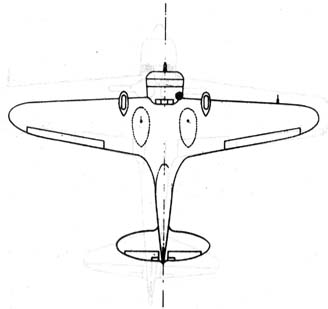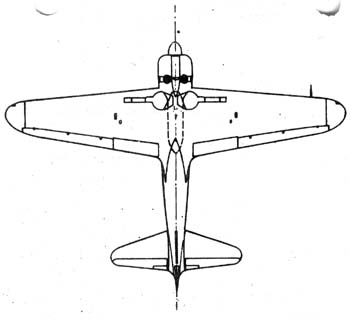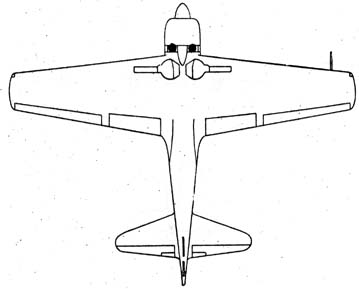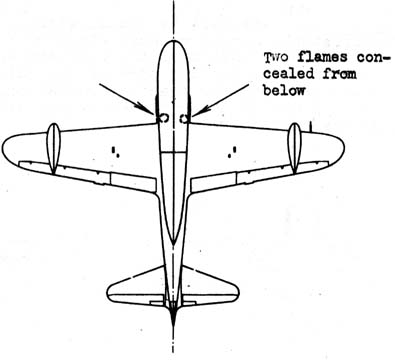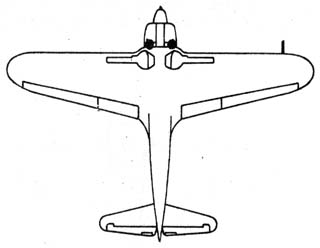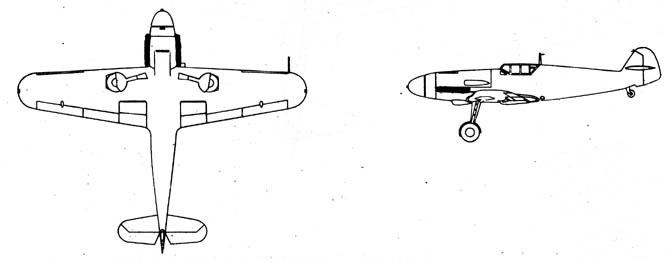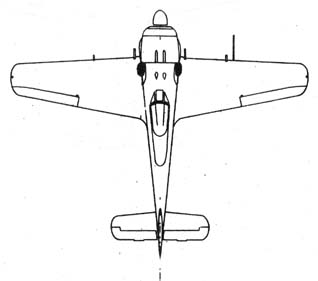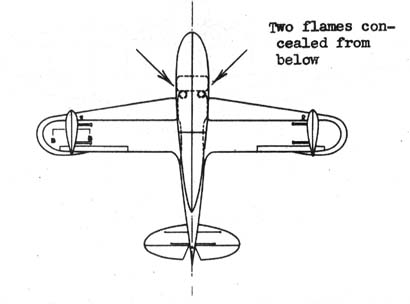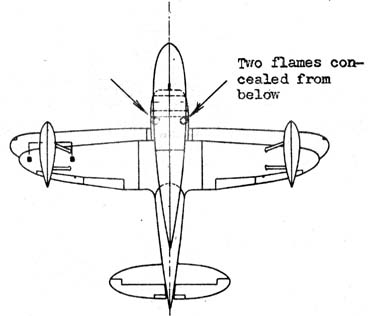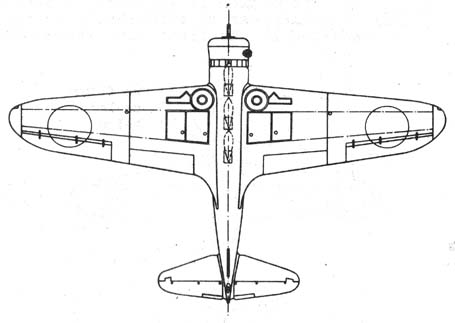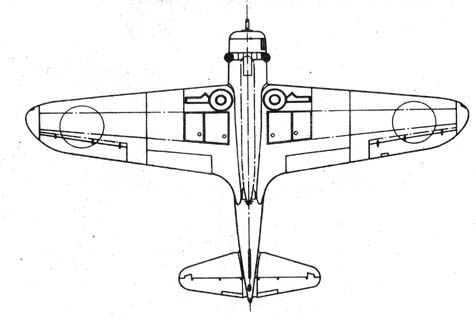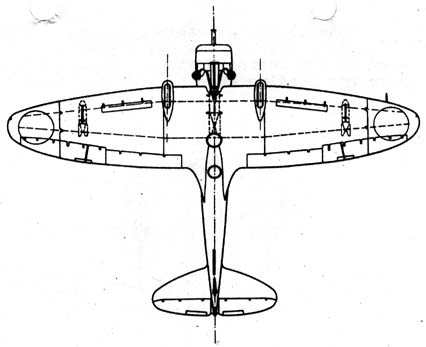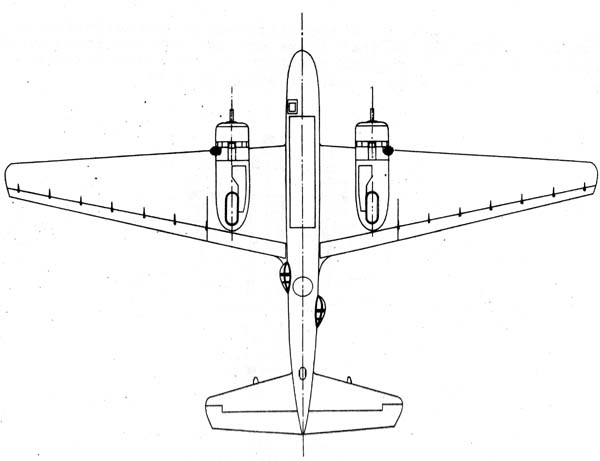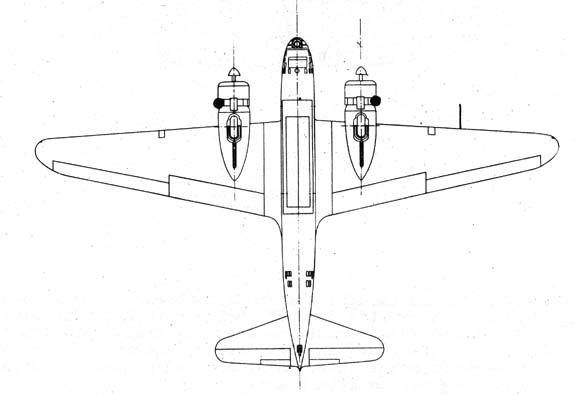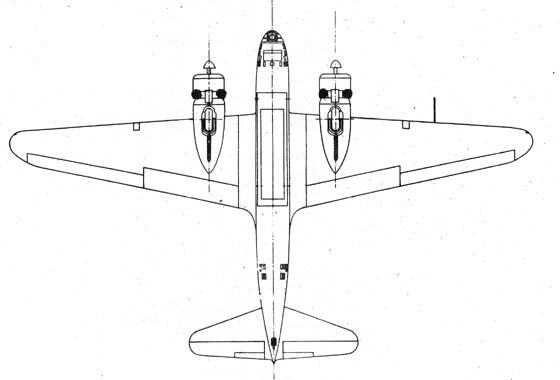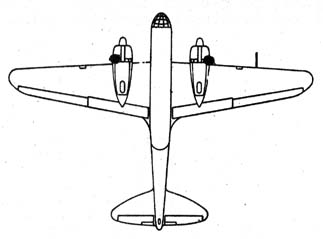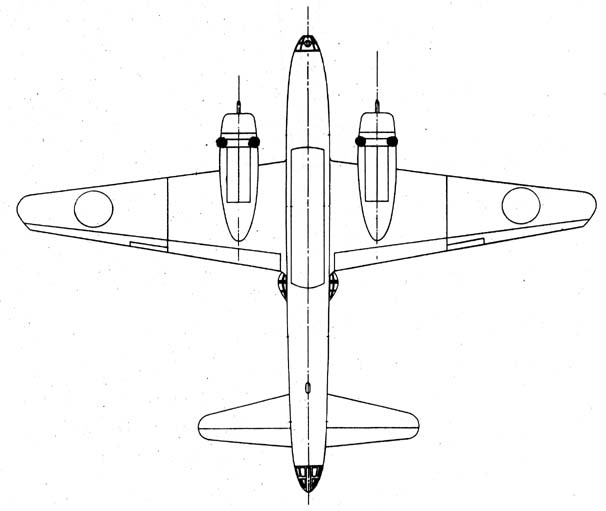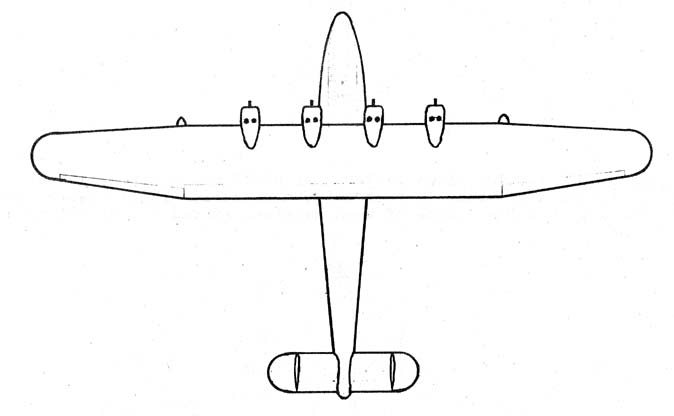|
If you can see this text here you should update to a newer web browser Normal | Highlight & Comment Comments/corrections will appear in yellow like this |
AIR INFORMATION SUMMARY NO. 14 Distribution: To All Units Ashore and Afloat Concerned With Aircraft EXHAUST FLAME PATTERNS FOR IDENTIFICATION OF JAPANESE AIRCRAFT AT NIGHT The following information and sketches summarize the data that is available at present on the exhaust flame patterns of Japanese aircraft. It is presented for whatever value it may have as an aid in the identification of Japanese aircraft at night. Since the information on this subject is rather incomplete, corrections and additional data from the combat areas are requested. The color of the individual flame patterns is particularly requested. Type 97 SSF. NATE. (SSF = Single Seat Fighter) The best information available indicates that NATE has one exhaust outlet and the pattern would appear as a single flame coming from the lower port side of the nose just forward of and below the leading edge of the mainplane.
(sketch on next page) 1. A12605 |
|
CONFIDENTIAL
Type 0 Mark 2 SSF, HAP. The exhaust flame pattern of HAP would be the same as ZEKE.
Type 0 Mark 1 SSF F/P, RUFE. (F/P = float plane) The exhaust flame pattern of RUFE would be the same as ZEKE. However, on account of the float, the flames when viewed from below would probably be obscured. (sketch on next page) 2. |
|
CONFIDENTIAL
Type 1 SSF, OSCAR. The exhaust flame appearance of OSCAR would probably be the same as ZEKE, although there are no pictures or information available at present to confirm this assumption. It is definite, however, that the exhaust stacks would be located within 4 to 8 o'clock positions.
3. |
|
CONFIDENTIAL
These were included in a report on Japanese aircraft as at this time during the war there was some thought that the Japanese might build licensed copies. Me 109F SSF. MIKE. This aircraft is fitted, with an in-line, V type engine and exhaust stacks appear on both sides of the fuselage, about 1/3 of the way up from the bottom of the fuselage and extending aft to a point in line with the leading edge of the mainplane. The flame will be much longer and brighter than the radial engine patterns and will appear on both sides of the engine cowling, extending along the entire length of the engine.
Fw 190 SSF, FRED. This aircraft is fitted with an unusual exhaust stack arrangement, as a flame appears to emanate from each side of the fuselage just forward of the cockpit enclosure and above the mainplane. The flames could be seen from the side or above and located just above and aft of the leading edge of the mainplane on each side of the fuselage.
4. |
|
CONFIDENTIAL
Type 95 R F/P. DAVE. (R F/P = Reconnaissance Float Plane) No information is available but it is possible that one exhaust flame would appear on either side of the fuselage. The flames would be concealed by the float when viewed from below.
Type 0 OF/P, PETE. (OF/P Probably is Observation Float Plane) Photographs confirm that the exhaust pattern of this aircraft would be the same as ZEKE, except that the flames would be concealed by float when viewed from below.
Type 97 Mark 1 T/B. KATE. (T/B = Torpedo Bomber) Although confirming data is not available, it is possible that this aircraft has one exhaust stack located on the lower port side of the cowling. It is directly forward of the leading edge of the main plane. (sketch on next page) 5. |
|
CONFIDENTIAL
Type 97 Mark 3 T/B. KATE. Confirming data is not available but it is probable that this aircraft has a double flame pattern having a stack on each side in the lower part of the engine cowling.
Type 99 D/B, VAL. (D/B = Dive Bomber) Photographs confirm a double flame pattern for VAL with stacks on either side of the cowling from which exhaust flames would be visible on the underside of the cowling directly forward of the leading edge of the main plane. (sketch on next page) 6. |
|
CONFIDENTIAL
7. |
|
CONFIDENTIAL
Type 97 M/B. SALLY. This bomber probably has an exhaust flame pattern similar to NELL. The span between the two flames is about 21 feet, and they are located on the outboard side of each engine nacelle, forward of and below the leading edge of the main plane.
Type 97 M/B. SALLY Mark 2. A recently received description of this new type of bomber states that there are two exhaust ports on each engine nacelle at the 8 and 4 o'clock positions. The flame pattern would be two pairs of flames, with a span of about 19 feet. 8. |
|
CONFIDENTIAL
Type 99 L/B. LILY. (L/B = Light Bomber) Although it cannot be definitely confirmed with data presently available, it is thought that LILY has a single exhaust flame on the outboard lower side of each engine nacelle. The two flames would be about 20 feet apart.
Type 1 M/B. BETTY. The flame pattern for BETTY would appear as two pairs of flames with about 19 feet between centers. There are two exhaust ports on the lower side of each nacelle, spaced 2 feet 3 inches apart.
9. |
|
CONFIDENTIAL
Type 97 F/B. MAVIS. (F/B = Float Bomber) There are two exhaust ports on the topside of each engine nacelle in the case of this aircraft. The flame pattern would appear as four pairs spaced about 13 feet apart with about 41 feet overall span for the entire pattern. At close range the flames would appear to come from the topside of each of the four engine nacelles at a position just forward of the leading edge of the wing.
10. |
